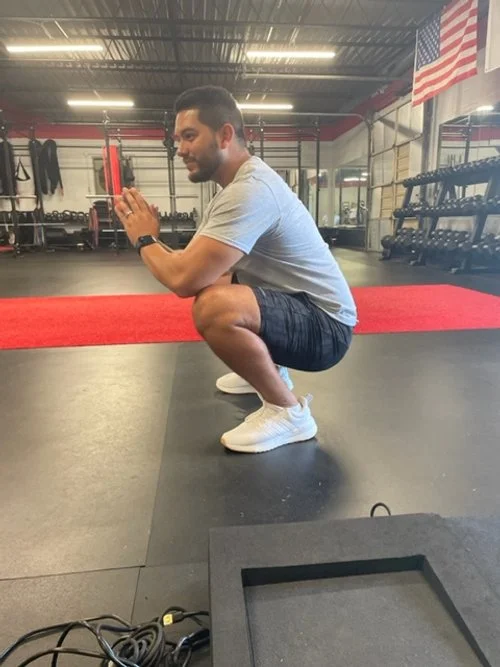Prevent Hill Running Injuries by Increasing Ankle Mobility
There are dozens of variables to consider with your running form to reflect your environment. Think about your most recent hilly run: how did you adjust your running style to running uphill? How about downhill?
Both uphill and downhill running are challenging for different reasons. With downhill running, gravity and momentum are on your side; you need to consciously slow yourself down to avoid tumbling down the hill. You do this through increased eccentric loading of the quads, glutes, and calf musculature. This gets tiring quickly, but it’s not overly stressful for the ankle joint.
For uphill running, particularly on steep uphill segments, you need to increase the intensity of quad, glute, and calf contractions to maintain the same pace. Think about it as “powering up the hill.”
But there’s another important variable in play - ankle dorsiflexion range of motion (ROM). This is the degree to which you can lift your foot and toes up towards your shin. The amount of dorsiflexion you have is enormously important to how long you can keep your heel on the ground as you power up the hill. Most of us have limited dorsiflexion ROM because we don’t need it in our daily lives. In different cultures around the world, folks often spend hours in a deep squat with their heels down so they have great ROM.
Take a look at how much ankle dorsiflexion this client is in for the full deep squat. Since he has excellent motion, he is able to descend deeper into the squat, taking pressure off his knees and hips.
As a real-life example, my wife, Eliza, ran the 2022 South End Shuffle 5K in Charlotte and began having left foot pain during the last mile. This pain lingered in the weeks following. Why did this happen?
We suspect this pain came about because the last mile of the South End Shuffle course had three steep hills. She’s a good runner, even a good hill runner, but she lacks ankle dorsiflexion ROM. When the hills kept coming, the demand on her ankle (talocrural) joints to continuously reach her end-range of dorsiflexion exceeded her ability. This caused her midfoot and forefoot to take on the extra burden which these bones and joints were not used to. As a result, she developed 5th metatarsal pain.
Part of the long-term treatment for Eliza’s foot pain is to improve upon her dorsiflexion ROM. If she can dorsiflex her ankle joint more, she can unload her midfoot and forefoot. This will enable her to power up hills with more motion and confidence without exacerbating her foot pain.
Eliza smiling through the foot pain after finishing the 2022 South End Shuffle.
What does this mean for you and your running training? I recommend assessing how deep you can squat while looking at yourself in the mirror. How low can you squat while keeping your heels firmly planted on the ground while simultaneously keeping your shins and low back parallel?
If you can fully squat like in the above picture, chances are your dorsiflexion ROM is adequate. If you can’t squat like this, it could be because of a lack of available dorsiflexion. Try a few of the ideas below and practice them daily for at least two weeks. Consider taking before and after pictures of your squat form to measure how far you’ve come.
If you have any questions, comments, or concerns about your individual condition, we at Premier Physical Therapy are happy to help! Running is our specialty. In fact, Dr. Phil Welsh is a medical volunteer at the Boston Marathon every year. Schedule your free 15 minute phone consultation with Dr. Phil Welsh here.
Keeping the heel down, shift your weight forward for 10 seconds, 10 repetitions per side.
Stretch one calf at a time. Hold each calf stretch for 30 seconds, 4x/side.




